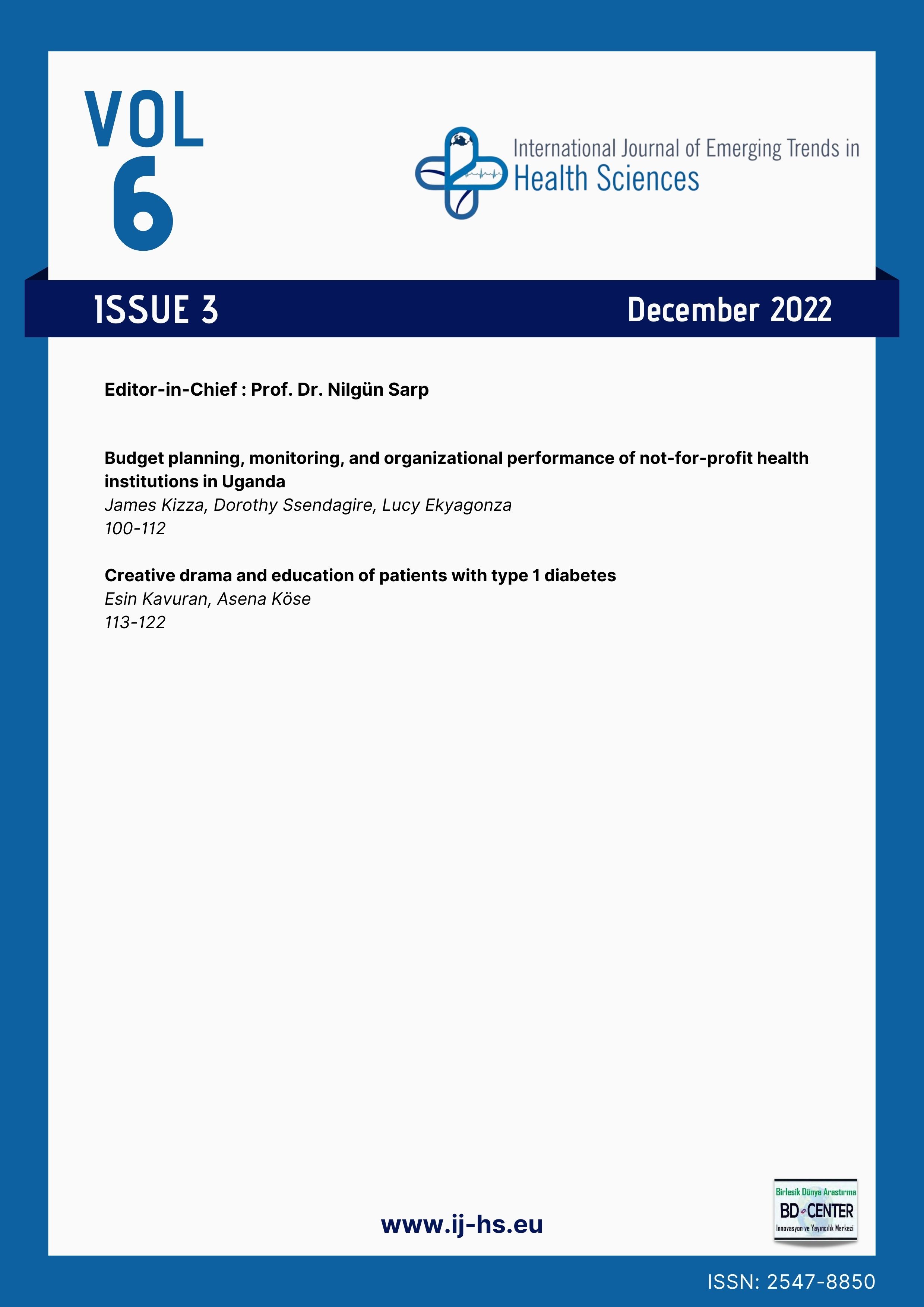Creative drama and education of patients with type 1 diabetes
Main Article Content
Abstract
Type 1 diabetes, although it can be seen in all age groups, is frequently seen between the ages of 7-15. When diabetes is managed effectively, complications related to diabetes can be delayed or even prevented. Studies have also proven that education is effective in diabetes management. Creative drama is a group activity, that can provide a curative environment for adolescents with T1DM in the adolescent period. There are not many studies in the literature on the use of creative drama in the field of health. The current study aims to describe the use of creative drama in the education of patients with type 1 diabetes. The study follows the qualitative research method, and all data were sought from previous research. According to the results of the research, it was determined that there was a positive change in children's knowledge, attitudes, and behaviors using the creative drama method.
Keywords: Creative drama; diabetes; education; nursing.
Downloads
Article Details

This work is licensed under a Creative Commons Attribution-NonCommercial-NoDerivatives 4.0 International License.
Authors who publish with this journal agree to the following terms:
- Authors retain copyright and grant the journal right of first publication with the work simultaneously licensed under a Creative Commons Attribution License that allows others to share the work with an acknowledgement of the work's authorship and initial publication in this journal.
- Authors are able to enter into separate, additional contractual arrangements for the non-exclusive distribution of the journal's published version of the work (e.g., post it to an institutional repository or publish it in a book), with an acknowledgement of its initial publication in this journal.
- Authors are permitted and encouraged to post their work online (e.g., in institutional repositories or on their website) prior to and during the submission process, as it can lead to productive exchanges, as well as earlier and greater citation of published work (See The Effect of Open Access).
